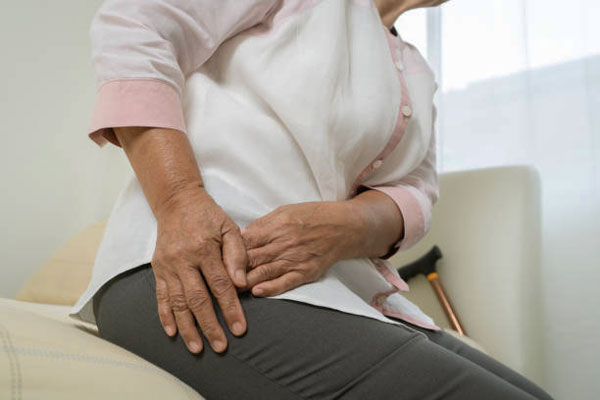Hip Arthritis
The hip joint is one of the biggest weight-bearing joints in the human body. It is a ball and socket joint, which is necessary for walking and bending. The bones of the ball and socket joint are covered by a slippery, hard surface known as articular cartilage, which allows the gliding of the bones within the socket as a person moves. This cartilage also acts as a shock absorber.
Inflammation of this joint can be very painful, as it is the main weight-bearing joint and crucial for moving the body.
What is hip arthritis?
Hip arthritis (medically termed hip osteoarthritis) is a joint disease that damages the cartilage of the hip joint. The loss of cartilage can lead to rubbing the bones against one another, causing pain while moving the joint.

What are the symptoms of hip arthritis?
Hip arthritis causes severe pain and stiffness in the joint. Therefore, the person finds it difficult to carry out day-to-day activities such as bending, getting up from a sitting position, or walking for a short distance.
Usually, the pain is felt in the groin, but it can, however, spread to the side of the hip, buttock, and knee. Pain can flare up with vigorous activities. With time, the pain worsens and can occur even without any activity and at night.
The other symptoms include:
- Locking or sticking of the joint
- Grinding sound during movement
- Limping due to decreased range of motion and ability to walk
- Increase in the joint pain during rainy season
What are the causes and risk factors of hip arthritis?
Hip arthritis occurs due to the breakdown and wearing away of the articular cartilage between the bones of the hip joint. This deterioration of the cartilage may occur as a result of daily wear and tear, overuse, muscle weakness, and hip joint instability. Hip arthritis happens gradually over a long period of time.
The factors which can make a person more likely to develop hip arthritis are:
- Advancing age
- A family history of osteoarthritis
- Previous injury to the hip joint
- Obesity
- Malformation of the hip joint at birth
- Playing sports and carrying out certain activities which increase the stress on the hip joints
How is hip arthritis diagnosed?
For diagnosing the condition, the doctor may take the details of the symptoms, review the medical history, and perform a physical examination. Tenderness, range of motion, grating sounds inside the joint, problems with the way of walking, and signs of injury around the hip observed during a physical examination may suggest hip arthritis.
Additionally, certain diagnostic tests may be ordered, which include:
- An x-ray may show the narrowing of space between the two ends of the bone, indicating a loss of cartilage.
- Sometimes an MRI scan or a CT scan may be ordered to determine the exact condition of the hip joint bone and the associated soft tissues.
What are the treatment options?
Although hip arthritis cannot be cured, treatment helps to relieve pain and allows the person to stay active.
Initially, hip arthritis is treated non-surgically. A range of non-surgical treatment options include:
- The use of assistive devices such as canes, walkers, or crutches may help the patient move independently.
- Physical therapy may be recommended to improve muscle strength and restore joint mobility. A specific exercise program would be designed based on the individual's needs and lifestyle.
-
The below medications are prescribed if the hip pain affects daily activities and is not relieved with the other non-surgical methods. These medicines include:
- Over-the-counter (OTC) medicines such as acetaminophen can effectively reduce mild hip pain. However, it is advisable to take these medicines with caution due to the risk of side effects.
- Non-steroidal anti-inflammatory drugs (NSAIDs) such as naproxen and ibuprofen can minimise pain and swelling.
- Corticosteroids such as cortisone act as powerful anti-inflammatory drugs and may either be taken orally or injected.
-
Surgery may be recommended if the arthritic pain is not relieved with non-surgical methods. Surgery for hip arthritis may help relieve pain and enable the person to carry out daily activities normally. The surgical methods include:
- Hip resurfacing is a procedure in which the damaged bone and cartilage of the hip socket are replaced with a metal shell. The head of the thigh bone (femur) is not replaced but is capped with a smooth metal covering.
- Total hip resurfacing involves the replacement of both hip socket and femur with an artificial device to restore the joint function.
- Osteotomy is a procedure in which the socket, or the head of the thigh bone, is cut and realigned to relieve the pressure from the hip joint.
Outlook / prevention
The rehabilitation program and the recovery time depends on the type of surgery performed.
Some of the lifestyle modifications that can reduce the risk of developing hip arthritis by preventing or relieving the stress on the joint are:
- Minimizing activities such as climbing stairs
- Switching from high-impact activities such as running or jogging to low-impact activities swimming or biking
- Losing extra weight
